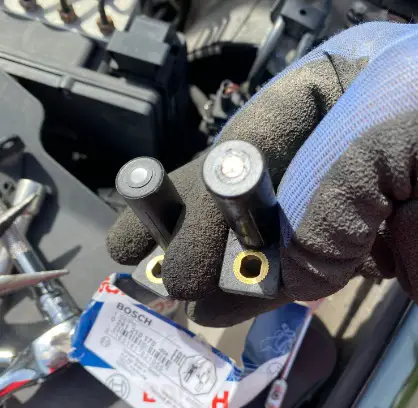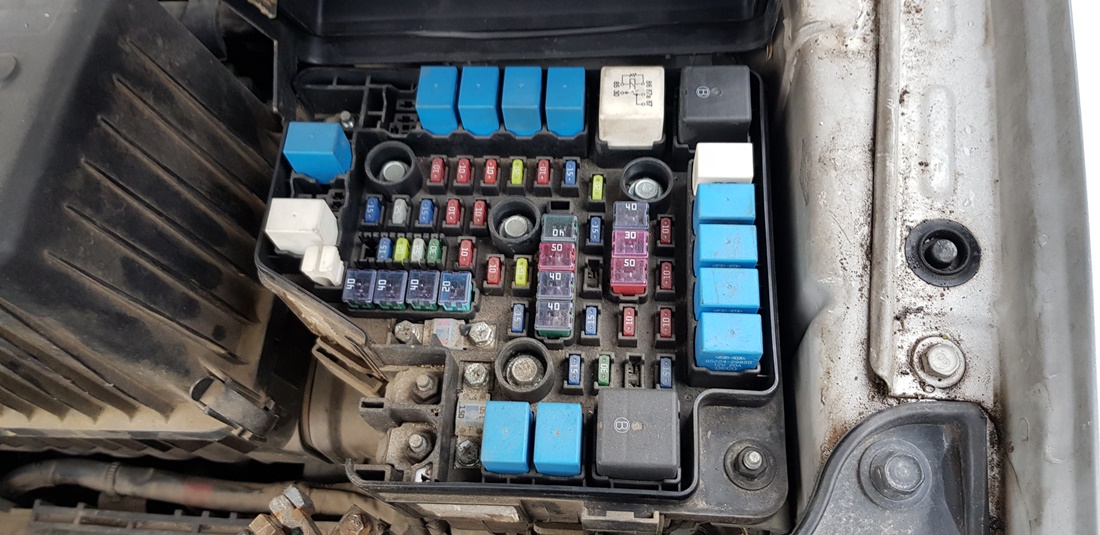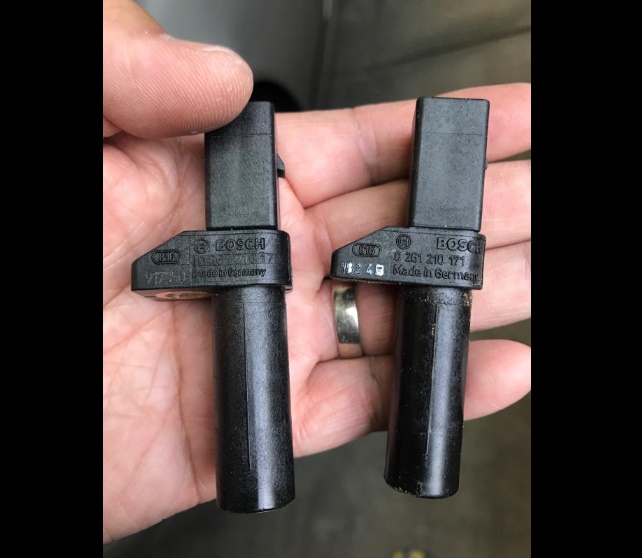A throttle body is located between your air intake filter and piping and your intake manifold. The throttle body acts as a valve, restricting the amount of air that can go into the engine.
As you press the gas pedal, you are actually opening up the throttle plate and allowing for more air to pass into the intake manifold, and then into the engine.
Over time, the throttle body will get dirty and you will feel a lack of power. Cleaning the throttle body is an easy task and I personally think that everyone can do it.
The great part is that you don’t have to remove the throttle body in order to clean it.
Key Takeaway
- To a throttle body without removing it, you can use a throttle body cleaner and a clean towel to spray and wipe away any dirt or debris.
- A throttle body in a car is a component that controls the amount of air entering the engine, regulating its performance.
- The most common signs of a clogged or bad throttle body include rough idle, poor fuel economy, uneven or slow acceleration, electrical problems, airflow disruptions, and an illuminated check engine light.
What Is a Throttle Body In a Car
A throttle body is an essential component of a car’s fuel injection system. It acts as a gatekeeper for the amount of air that enters the engine.
Located between the air intake and the intake manifold, the throttle body controls the airflow by opening or closing a valve known as the throttle plate.
When the driver presses the accelerator pedal, it signals the throttle body to open the throttle plate, allowing more air to enter the engine.
This increased airflow enables the engine to burn more fuel, resulting in higher power output.
The throttle body also houses sensors that provide information to the engine control unit (ECU) to optimize fuel delivery and ensure efficient engine performance.
How To Clean a Throttle Body Without Removing It
Cleaning a throttle body is very simple and I think that everyone can do it. The best and the only way that you should clean a throttle body is without removing it.
The throttle body should be cleaner every 30,000 miles. Here is how to clean a throttle body without removing it.
1. Get a clean towel and a throttle body cleaning product

Before you start cleaning your throttle body, you should get a clean towel and a throttle cleaning product. Some vehicles have a big warning sign on the throttle body about which cleaning products you can use. Usually, Ford vehicles have specific throttle body cleaning products. If you don’t see a warning there, you can use the product that I use ( ).
).
2. Get access to the throttle body

To access the throttle body, you will have to remove the engine air intake rubber. The air intake rubber is usually secured with a clamp which is easy to remove. The rubber makes it so easy to locate the throttle body if you are not sure what you are looking for. Remove the screws and secure the air intake rubber.
3. Move the throttle plate to an open position

To clean the inside of the throttle body, you will have to place the throttle place in an open position. Please, do not move the throttle plate with your hands. Have someone in the vehicle push the gas pedal. If you move your throttle plate with your hands, you can confuse the computer, and then you will have to do a reset.
4. Spray the throttle body cleaning product

Once the throttle body plate is in an open position, spray the throttle body cleaner in the throttle body. Do not spray a lot because you can overflood the engine. Spray 3-4 times on the plate itself and on the inside of the throttle body.
5. Clean the throttle body with a clean towel

Get a clean towel and clean the inside of the body. I recommend that you use a clean towel because you are trying to remove the buildup debris and not add new ones. Make sure to clean the plate as well as the inside of the throttle body.
6. Reinstall the engine air intake rubber
Reinstall the engine air intake rubber and tighten the screws on the clamp. Move the air intake rubber to make sure that it is secured properly. You don’t want to have leaking air.
7. Start your vehicle
Start your vehicle as you would normally do. If the vehicle is not starting, press the gas pedal to the floor and try to start it. If you sprayed a little bit more of the cleaning product, your vehicle might not start. But, no worries. Continue to crank the engine and it will start.
Signs Of a Clogged or Bad Throttle Body
When the throttle body is clogged or has failed, there are some signs and symptoms that can help you find out what’s wrong with your vehicle. Here are the most common signs of a clogged or bad throttle body.
1. Reduced power or Limp mode
If you notice that your vehicle is slower than usual, this is a sign that the throttle body is either clogged and needs cleaning, or it has failed. Limp mode or reduced power is a safety feature designed to limit engine performance in order to prevent engine damage. The computer sets the vehicle into limp mode when a fault is detected.
Scan your vehicle with an OBD scanner ( ) and check the fuel section. The fuel section should read “CL” or closed-loop after the engine is warm. If it reads “OL” or open-loop, then the vehicle is stuck in limp mode. At this point, you should try and clean your throttle body and then run diagnostics again. If you are getting the same error, then you need to replace the throttle body.
) and check the fuel section. The fuel section should read “CL” or closed-loop after the engine is warm. If it reads “OL” or open-loop, then the vehicle is stuck in limp mode. At this point, you should try and clean your throttle body and then run diagnostics again. If you are getting the same error, then you need to replace the throttle body.
2. Poor idle and engine performance issues
The throttle body is responsible for allowing a certain amount of air to flow into the engine. When the throttle body is clogged or has failed, it can cause poor idle and stalling at the stop light, as well as engine performance issues while driving. Try cleaning the throttle body with a throttle body cleaning product. If you still have issues, replace the throttle body says GoMechanic.
3. Lack of power
When a vehicle has a clogged or faulty throttle body, the vehicle will have a lack of power while driving. Some vehicles are even limited to second gear and can go no faster than 35 miles per hour.
Use a scan tool ( ) and check for throttle body-related codes. If you see any error codes associated with a throttle body, try cleaning the throttle body. If the problems and error codes are still there, replace the throttle body.
) and check for throttle body-related codes. If you see any error codes associated with a throttle body, try cleaning the throttle body. If the problems and error codes are still there, replace the throttle body.
Causes of a Clogged Throttle Body
- Accumulation of carbon deposits from engine oil or fuel additives.
- A build-up of dirt, debris, and grime from the air intake system.
- Contaminants from a malfunctioning air filter.
- Incomplete combustion leads to the formation of carbon deposits.
- Use of low-quality fuel or fuel with high ethanol content.
- Poor maintenance and infrequent cleaning of the throttle body.
Can You Damage a Throttle Body By Cleaning It?
Yes. It’s true that a throttle body can be damaged by cleaning it. However, most of the time any potential damage is more likely caused by human error than anything else. During the cleaning process, it’s important to ensure that all debris and contaminants are expelled from the unit – failing to do so can cause clogs or air pockets in the throttle plate assembly which will stop the car from running properly.
If the wrong chemical or fluid is used during cleaning too, it can cause damage to the throttle body. Solvents are powerful chemicals that can be quite damaging when used incorrectly. It can be tempting to use a more powerful solvent when dealing with hard-to-remove residue on the throttle body of an automobile, but this could lead to some serious issues.
Common solvents like acetone and gasoline should never be allowed on the throttle body due to their corrosive properties. It is best to use a product specially designed for cleaning throttle bodies.
Various all-purpose cleaners may also damage or strip away crucial parts, so it pays to exercise caution when trying to clean the throttle body.
Look for a cleaner that has been designed with certain metals in mind so that you know it won’t corrode or wear away when sprayed on any part of the engine. Select one with high-grade ingredients which are corrosion-stabilizing for added protection against potential harm.
With the best throttle body cleaner, powered by a commitment to quality and customer satisfaction, you can ensure continued performance in your vehicle for many miles down the road says Mobil.
Can You Use WD-40 To Clean The Throttle Body?
Cleaning the throttle body of a car can be an important step in keeping your vehicle running optimally, and a popular product used to tackle this job is WD-40.
However, it should be noted that while WD-40 can help in the process of cleaning a throttle body, it isn’t ultimately the most suitable option. It is usually best to use engine cleaner on the throttle body and leave the WD-40 out.
Its purpose is generally only to coat certain components or free stuck parts. If you do decide to use WD-40, make sure you supplement it with an additional cleaner that is specifically made for car engines before turning it back on.
WD 40 is an incredibly useful product found in many homes. It’s a multi-purpose lubricant and penetrant that works on hundreds of materials and parts, from rubber to metal to wood. WD 40 can be used for squeaky doors, rusty bicycle chains, stuck zippers, and stubborn screws, but not the throttle body.
WD40 is a versatile solvent that is advertised and widely used for its many benefits. Unfortunately, using it on a throttle body can be dangerous as WD40 contains lubricating oils and solvents that may damage the delicate parts of the throttle body.
Can a Throttle Body Cleaner Damage The Engine
The throttle body cleaner will not damage your engine. The throttle body cleaner is designed to remove gum, varnish, and other contaminants that get stuck on the throttle body. You can, however, overflood the engine if you spray too much of the throttle body cleaner into the throttle body. But, this will do no permanent damage to the engine.
How Often To Clean The Throttle Body
You should clean the throttle body annually or every 75,000 miles to maintain optimal performance.
It is important to note that symptoms of a dirty throttle body, such as rough idle and decreased fuel efficiency, may indicate the need for more frequent cleaning.
As always, it is advisable to consult the vehicle’s owner’s manual or seek professional advice for specific recommendations based on your vehicle’s requirements.
FAQs
Q: What is a throttle body?
A: A throttle body is part of the engine air intake system that controls the amount of air flowing into the engine.
Q: What are the symptoms of a dirty throttle body?
A: Symptoms of a dirty throttle body include rough idle, stalling, poor acceleration, and even the check engine light coming on.
Q: Why is it important to clean the throttle body?
A: Cleaning the throttle body helps to maintain proper engine performance by ensuring smooth air flow and preventing any build-up that could affect throttle response or engine efficiency.
Q: Can I clean the throttle body without removing it?
A: Yes, it is possible to clean the throttle body without removing it from the engine.
Q: How do I locate the throttle body?
A: The throttle body is usually located between the air filter box and the intake manifold. It is connected to the air intake hose and controlled by the gas pedal.
Q: What tools do I need to clean the throttle body?
A: You will need a throttle body cleaner, a screwdriver (for removing any clamps or screws), and a small toothbrush or soft cloth for cleaning.
Q: How do I clean the throttle body without removing it?
A: To clean the throttle body without removing it, start by disconnecting the air intake hose. Use the throttle body cleaner and toothbrush to clean the inside of the throttle body, focusing on any build-up. Reconnect the air intake hose once clean.
Q: Do I need to clean the throttle body regularly?
A: It is recommended to clean the throttle body every 30,000 to 50,000 miles or as specified by your vehicle’s manufacturer.
Q: Should I consult a mechanic to clean the throttle body?
A: While you can clean the throttle body yourself, if you are not confident or comfortable doing so, it is recommended to consult a professional mechanic.
Q: Can cleaning the throttle body fix my engine light issues?
A: Cleaning the throttle body may help resolve some engine light issues related to throttle body build-up, but it is not a guaranteed fix for all engine light problems.
In Conclusion
In conclusion, cleaning a throttle body without removing it is not an easy task. It takes patience and skill to do it properly.
However, with the right tools and precautions, anyone can accomplish this job safely and effectively. Make sure to follow all safety measures as outlined in this guide for the best results.




